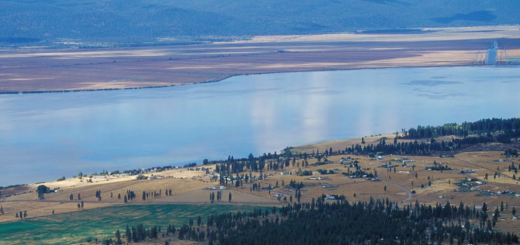Research Summary: Measurement Of Diporeia Respiration Rate For Lake Superior
0ADepartment of Biological Sciences, Michigan Technological University, Houghton, Michigan, United States.
BDepartment of Civil and Environmental Engineering, Michigan Technological University, Houghton, Michigan, United States.
Introduction
Production of Diporeia in Lake Superior has been of interest due to population declines experienced in the lower Great Lakes (Nalepa et al. 2006, Barbiero et al. 2011). It has been suggested that the occurrence of these declines is correlated with the introduction of non-native species, particularly zebra and quagga mussels (Nalepa et al. 2006), and that declines are impacting important fisheries (Madenjian et al. 2005). Diporeia populations in Lake Superior have yet to deviate from historic levels (Cook and Johnson 1974); the only Great Lake that has not been subjected to widespread invasion by mussels. Reduced dissolved oxygen conditions are believed to have detrimental effects on amphipod fitness (Johansson 1997). Chapelle and Peck (2004) found that sizes of various species of amphipods increase with increasing oxygen availability. Understanding the causes of subtle changes in Diporeia physiology (e.g. respiration rate) could have a significant utility in understanding their population dynamics in the face of climate change or vulnerability to invasive species.
Methods
Our approach was to 1) collect and hold Lake Superior Diporeia in sediment and lake water in a dark, 4°C room, 2) calibrate a Unisense Microsensor Clark-type polarographic microelectrode, 3) measure respiration rates of Diporeia from an analysis of microcosm DO concentrations in a series of experiments using individuals selected, based on body length, for three length classes, 4) Photograph Diporeia for length images after each trail and group together, dry for 24 hours, and weigh. Mass-specific respiration rates were calculated as the slope of the oxygen depletion curve divided by the total dry weight of Diporeia biomass present.
Results
Mass-specific respiration rates for Lake Superior Diporeia ranged from 32 to 45 mgO2·gDW-1·d-1. The average respiration rate over all length classes was 38.2 ± 1.1 (SE) mgO2·gDW-1·d-1, with a coefficient of variation of 10%. The average respiration rate, calculated from a regression of the oxygen depletion rate versus Diporeia biomass (Figure 2, top panel) yielded a similar value, 34.9 mgO2·gDW-1·d-1. A linear regression analysis of average Diporeia body length from each trial did not show a significant relationship with mass-specific respiration rate. A similar analysis of Diporeia dry weight showed a significant relationship with the rate of O2 depletion within each microcosm. The mean respiration rate in this study was found to be significantly higher than previous findings for Diporeia populations in Lakes Michigan and Ontario.
Conclusions
We have provided data for oxygen consumption of Lake Superior Diporeia that can be used to estimate the slope and the intercept for maximum standard respiration in a bioenergetics model (see Kitchell et al. 1977). These data, along with those from previous works (Quigley et al. 2002) concerning Diporeia physiology can be used to estimate the viability of this population under potential future environmental stressors. In this study, a statistically significant relationship between respiration rate and body length of Diporeia was not observed. Additionally, a statistically significant relationship between O2 depletion and Diporeia dry weight was observed. These results suggest that Lake Superior Diporeia respiration rates may be estimated from amphipod biomass. This would allow biological models aimed at predicting carbon turnover and biogeochemical balances associated with Lake Superior’s benthic community to estimate metabolic rate without requiring a Diporeia size-frequency coefficient.
Since Diporeia densities can vary depending on region and depth of Lake Superior, a comparison of respiration rates between organisms from different locations may provide further insights into Diporeia bioenergetics for modeling lake-wide ecosystem function as well as aid in the capacity to predict ecosystem responses to influences such as anthropogenic inputs, invasive species, or global climate change.
References
- Barbiero, R. P., K. Schmude, B. M. Lesht, C. M. Riseng, G. J. Warren, and M. L. Tuchman. 2011. Trends in Diporeia populations across the Laurentian Great Lakes, 1997–2009. Journal of Great Lakes Research 37:9-17.
- Chapelle, G. and L. S. Peck. 2004. Amphipod crustacean size spectra: new insights in the relationship between size and oxygen. Oikos 106:167-175.
- Cook, D. G. and M. G. Johnson. 1974. Benthic Macroinvertebrates of the St. Lawrence Great Lakes. Journal of the Fisheries Research Board of Canada 31:763-782.
- Johansson, B. 1997. Behavioural response to gradually declining oxygen concentration by Baltic Sea macrobenthic crustaceans. Marine Biology 129:71.
- Kitchell, J. F., D. J. Stewart, and D. Weininger. 1977. Applications of a Bioenergetics Model to Yellow Perch (Perca flavescens) and Walleye (Stizostedion vitreum vitreum). Journal of the Fisheries Research Board of Canada 34:1910-1921.
- Madenjian, C.P., Pothoven, S.A., Schneeberger, P.J., O’Connor, D.V., and Brandt, S.B. 2005. Preliminary evaluation of a lake whitefish (Coregonus clupeaformis) bioenergetics model. In Proceedings of a workshop on the dynamics of lake whitefish (Coregonus clupeaformis) and the amphipod Diporeia in the Great Lakes. Great Lakes Fish. Comm. Tech. Rep. 66
- Nalepa, T. F., D. L. Fanslow, A. J. Foley, III, and G. A. Lang. 2006. Continued disappearance of the benthic amphipod Diporeia spp. in Lake Michigan: is there evidence for food limitation? Canadian Journal of Fisheries and Aquatic Sciences 63:872-890.
- Quigley, M., P. F. Landrum, W. S. Gardner, C. R. Stubblefield, and W. M. Gordon. 2002. Respiration, Nitrogen Excretion, and O: N Ratios of the Great Lakes Amphipod Diporeia Sp. NOAA Technical Memorandum GLERL-120.
Full study published in the Journal of Great Lakes Research, Volume 40, 2014, pp. 1033-1036.
Featured Image: Lake Superior as seen from Agawa Rock, Lake Superior Provincial Park. (Credit: Wikimedia Commons User Fungus Guy via Creative Commons 3.0)













